Throughout this global health crisis, it has become clear that small independent countries have been able to offer very supportive economic recovery packages. For example, Norway and Denmark, two of our closest neighbours which have similar population sizes to Scotland, have been able to source large sums of funding to deal with the coronavirus pandemic and restarting their economies.
Despite the UK Government claiming that being a part of the UK has benefitted Scotland during this time, we must consider the question: could an independent Scotland have been able to spend more on preventing the spread of the virus and supporting the economy than it has been able to as part of the UK?
In a previous article, we considered how much funding an independent Scotland would have received if it had been part of the EU. We discovered that had Scotland been both independent and a member of the EU, it would have received roughly £5.4bn worth of funding to help tackle the COVID-19 crisis.
According to the Scottish Parliament Information Centre (SPICE), Scotland, as part of the UK, has received a total of £3.7bn to help tackle the COVID-19 crisis and recover afterwards. This is significantly less than what an independent Scotland could have received if it had been a member of the EU.
However, we need to consider how an independent Scotland would have been likely to perform during this crisis and the type of economic recovery package the government may have provided.
We can do this by evaluating the performances of independent countries, Norway and Denmark, that have a similarly sized population to Scotland. This provides a benchmark and allows for the consideration of whether Scotland’s performance in tackling coronavirus would have been improved as an independent country.
Norway
As of June 2020, the key implemented and proposed fiscal measures to tackle COVID-19 in Norway accounted for NOK 162 billion (approximately £13.9bn).
Some of Norway’s key COVID-19 policies include:
- The household income protection scheme which involves increased benefits for the unemployed, expanded sickness and child care and greater support for those who have been temporarily laid off.
- Support for business, offering a programme that compensates heavily affected, but otherwise sustainable businesses, for unavoidable fixed costs, a government fund that buys bonds issued by Norwegian companies, grants for start-up companies and subsidies of domestic air routes.
- Offering additional support to essential sectors such as healthcare.
- Guarantee and loan schemes for businesses, including loan guarantees for SMEs and a programme for the re-insurance of private credit insurance providers.
- Increased funding for education and training.
Denmark
In Denmark, the government responded very quickly to the coronavirus crisis and enforced various measures in order to prevent the spread of the virus. As of July 2020, discretionary fiscal support in Denmark amounted to DKK 131.4 billion (approximately £15.9bn).
Some of Denmark’s key COVID-19 policies include:
- Extended reimbursement for employees on sick leave
- Increased spending on additional health care needs
- In June 2020, relief measures were phased out and replaced with a recovery package which involves policies such as:
- An extension of the deadline for applications for existing guarantee schemes
- An extension of support for self-employed, freelancers, combiners etc. by one month
- A temporary fixed cost compensation scheme for companies that are affected by certain COVID-19 restrictions
- Support for the plan to recapitalise Scandinavian Airlines with up to DKK 6 billion.
Conclusions
Norway and Denmark both have a population that is roughly the same size as Scotland. However, both of these countries have been able to commit to much larger budgets in tackling the coronavirus pandemic. SPICE estimated that Scotland has received approximately £3.7bn towards its COVID-19 recovery package.
In comparison, Norway’s implemented and proposed COVID-19 fiscal measures account for approximately £13.9bn, roughly 3.7 times more than the money that has been allocated to Scotland by the UK Government. Denmark’s spending is approximately £15.9bn, 4.3 times more than the funds provided to Scotland by the UK Government during the pandemic.
As you can see, independent Northern European countries, with a population of approximately 5.5 million, have been able to provide far greater funding towards tackling COVID-19 than what Scotland has received as part of the UK. Therefore, it is logical to suggest that an independent Scotland would have been able to offer greater funding towards tackling COVID-19, supporting businesses and the economy overall.

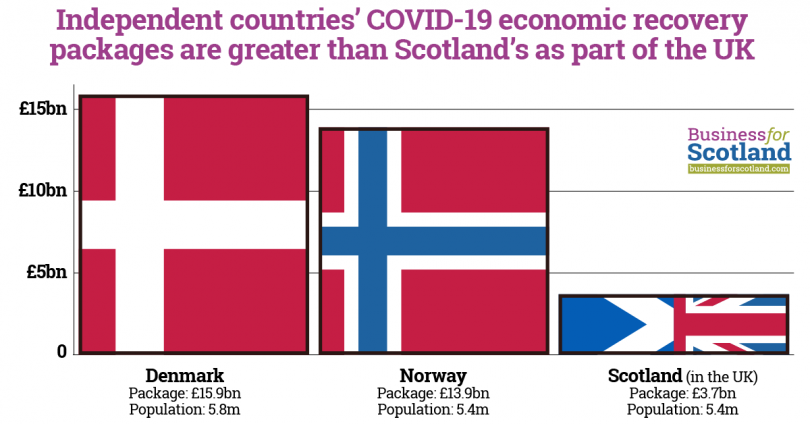
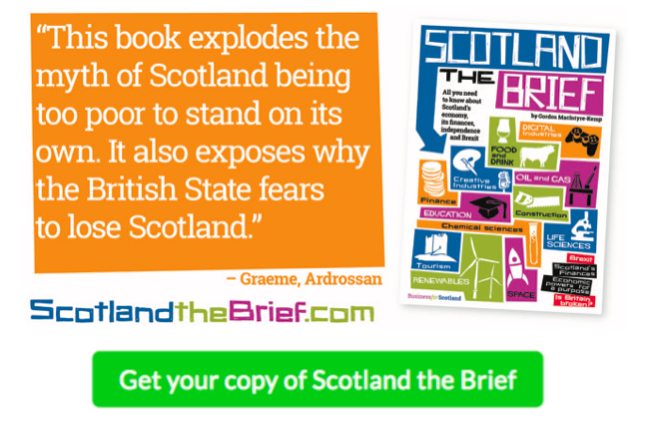

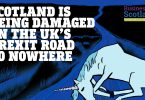
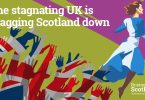
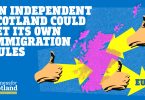


Are you comparing like with like?
Doesnt seem like £3.7bn is the total spend in scotland. Does this include all measures or just those from westminster budget?